The evolution of artificial intelligence
The fourth industrial revolution
Humanity's impact and influence on our planet is undeniable.
We have constructed cities that sprawl for miles and built skyscrapers that pierce the heavens. We have tunneled through mountains, redirected rivers and spawned new bodies of land. Roads and power lines crisscross the ground, while airplanes and satellites clog the atmosphere and beyond. With our dominion over Earth secure, we have even set our sights on conquering the solar system.
It took us several million years to reach this point. But progress has snowballed since the first industrial revolution of the late 18th century. In less than 250 years, we catapulted from horse-drawn carts to self-driving cars; from navigating by the stars to relying on voice-activated GPS instructions; from penning letters to loved ones to having awkward conversations with Siri.
The Internet, above all, has shaped more aspects of society across civilizations than any single invention of the past. The ability to instantaneously communicate and share and consume information – be it cat videos or scientific research – has amplified the pace of technological breakthroughs. As Gordon Moore, the co-founder of Intel and Fairchild Semiconductor, observed in 1965, processing power doubles every two years as transistors in a chip gain in abundance and speed - a rate emblematic of broader discovery and innovation.
We have entered the fourth industrial revolution, an era that will be defined and driven by extreme automation and ubiquitous connectivity.
Like the three other industrial revolutions, the changes borne during this period will irrevocably alter the course of our future and the way we interact with technology and each other. But in this new digital age, there will be one development so profound and seismic that it will rupture the Earth's long-held human-centric status quo - the birth and transcendence of artificial intelligence (AI
"At some stage…we should have to expect the machines to take control."
The quote made by mathematician and cryptographer Alan Turing in 1951 has been a key guiding principle for data scientists and business leaders interested in AI. Until recently, AI was only a concept - a "one day" conversation that came alive in science-fiction novels and movies. The idea of an artificial being with humanlike consciousness can be traced back to tales of mechanical men from the Middle Ages and Mary Shelley's Frankenstein to, more recently, author and scientist Isaac Asimov's three laws of robotics.
The earliest emotion-relevant work in AI dates back to the 1970s, when cognitive science came of age as a discipline, inspired in part by Allen Newell and Herbert A. Simon’s 1972 book “Human Problem Solving.” In the same year, Kenneth Colby invented one of the first devices of emotional AI: a computer system called PARRY that simulated a conversation with a human paranoiac.
But as the fourth industrial revolution clearly materialized in the 21st century, so did the advent of AI. Around 2,000 start-ups globally now have AI as a core part of their business model. And with headline-grabbing news, like Google's AlphaGo defeating the Go world champion or Baidu's personal assistant Duer accepting orders at KFC restaurants in China, the foundation has been set for progress to avalanche in the years to come.
AI is divided broadly into three stages: artificial narrow intelligence (ANI), artificial general intelligence (AGI) and artificial super intelligence (ASI).
The first stage, ANI, as the name suggests, is limited in scope with intelligence restricted to only one functional area. ANI is, for example, on par with an infant. The second stage, AGI, is at an advanced level: it covers more than one field like power of reasoning, problem solving and abstract thinking, which is mostly on par with adults. ASI is the final stage of the intelligence explosion, in which AI surpasses human intelligence across all fields.
The transition from the first to the second stage has taken a long time (see chart), but we believe we are currently on the cusp of completing the transition to the second stage - AGI, in which the intelligence of machines can equal humans. This is by no means a small achievement.
By the end of the decade we will enter the AGI phase
What are the societal benefits? Are we at risk of being replaced?
The beginning of true autonomy
In the next four years, we expect AI’s industry growth will start to explode and its impact on business and society will begin to emerge.
By the end of the decade, we believe the recent rapid advances in AI will eventually plant progress firmly into the AGI phase – the beginning of true autonomy. AI-powered machines and software will likely start to untether from human supervision, embarking on their fateful path as sentient beings. But this will happen much later in the distant future. In the next four years, however, we believe AI's industry growth will start to explode and its impact on businesses and society will begin to emerge.
According to our estimates, the AI industry was a USD 5 billion marketplace by revenue in 2015, , a respectable size for such a budding sector. By 2020, we believe exponential improvements and broader adoption should more than double revenue to become a USD 12.5 billion industry. This represents a 20% annual growth rate. Assuming enterprise value/sales multiples of 10-15x, which is on par with other emerging fast-growing industries within the tech sector, AI as a standalone industry has the potential to claim a total market cap of USD 120-180 billion by 2020.
Surpassing human intelligence
Life in the following thirty years will likely become almost alien to today's observer, similar to how we view life in the 1940s and 1950s.
This will be particularly evident as we get closer to the half-century mark. As technology continues to progress by leaps and bounds, radical advances in quantum computing will add a new dimension to our ability to create and solve. This period will become a golden era in the advancement of all things technological – the ever-accelerating development of AI will compound the pace at which we invent.
Like all technologies, AI will be created with a singular purpose: to aid humanity. Naysayers and Hollywood moviegoers need not fear the rise of the machines. On the contrary, self-aware robots and programs will become instrumental in our quest to resolve society's mega-challenges like climate change, antibiotic-resistant bacteria and diseases, aging populations and many more. And if you think your iPhone is cutting-edge, think about the possibilities of AI-powered consumer devices; gone will be the days of fat-fingered typos and lost GPS signals.
By 2030, increasingly useful applications of AI will translate into meaningful social and economic changes. One such outcome, for example, will be much lower costs of traditional goods and services, which will effectively narrow socioeconomic disparities worldwide, as AI eliminates imperfections in supply chains and enhances overall productivity.
The adoption of AI in healthcare could improve the quality of life for millions and could save lives that otherwise wouldn't be possible.
The key hurdles will be gaining the trust of the medical community and overcoming regulatory barriers. For the nations that succeed in this undertaking, the knock-on effect of having a superior, AI-driven healthcare system can promote healthier and wealthier societies; but for those that don't, sub-standard medical quality will inhibit the long-term economic and societal value afforded to healthy populations.
Medical analytics will ultimately transform healthcare delivery as billions of clinical records and images are analyzed and fed into AI algorithms. These programs, supported by mobile health applications that yield real-time data, will provide diagnosis and treatment recommendations customized to the patient's medical history. This should greatly reduce the element of human error in medical treatment in general. If surgery is needed, intelligent automation will be able to conduct increasingly complex operations as the technology develops. Already, robotic systems are playing a vital role in helping in the field of orthopedics, an area set to boom in the coming years.
Diagnosing illness will be another pivotal area. Through AI diagnosis tools, doctors will have the ability to quickly identify unknown and rare diseases, which otherwise would have required a specialist, and match them with the necessary treatment method. After central healthcare systems are implemented, AI processes will be able to comb through the massive trove of data to find the ideal solution in a matter of seconds.
A bumpy road ahead
The cases outlined above are but a snippet of the full value that AI is expected to create across industries, governments and all types of organizations.
Sectors like security, education, entertainment, elderly care, agriculture, etc. will also experience extreme change, much of which will be positive. But change is never easy, especially when it interrupts your way of life.
Our society’s new layer
Spiraling progress should ultimately result in AI’s ability to self-develop.
Until this point, AI technology has been molded by humans to fill human needs. Its functions have been very specific: anticipate financial trends, handle household chores, manage public transportation systems, etc. Future generations will grow comfortable with the radical advances of their time and become highly dependent on the services AI provides – just like how we have become reliant on the Internet to communicate, research and work.
But as we weave AI into our everyday existence, AI would gradually do the opposite - spiraling progress should ultimately result in AI's ability to self-develop. Instead of being siloed to their respective task, AI's collective intelligence would then begin to amalgamate and eventually yield even greater and faster advances as its processing might compounds. Think about it as a controlled form of artificial selection, whereby AI entities have the autonomy to pick and choose their own evolutionary path.
In such a scenario, AI would eventually take the reins of its own fate from humans, and at this moment it will have transcended its creators in many ways. And thus, the era of artificial super intelligence (ASI) would have arrived.
But what if machines do seize control one day?
If Skynet is any indication, we'll need a naked Arnold Schwarzenegger from the future to thwart any robotic takeover. All jokes aside, it will be up to the regulators and scientists to create a concrete framework for AI to grow at a healthy pace. Also, global regulation is likely to curb such situations as AI's transformational progress will be closely monitored by world leaders and the public due to gradually enflamed sensitivities.
These concerns of the past - privacy, job losses and rebellion - will continue to haunt the future. And such issues may be kicked into a higher gear once we start losing our ability to pull the metaphorical plug. Existential issues will also become much more discussed and poignant: Should truly intelligent and aware machines be afforded the same level of government support and protection as humans? How will the law decide court cases involving AI rights? Will they have rights? Can they vote? Will the court recognize inter-species marriage? Questions and cases like these will define public discussion in society around this time
The journey of AI's human appearance has already begun.
It's impossible to know at this point what shape ASI will choose to take. But the journey of AI's human appearance has already begun, which is essentially an exercise in replicating human emotion. In our recent New York Times article What It Takes To Be Human, we introduced Hiroshi Ishiguro, a professor at Osaka University’s Intelligent Robotics Laboratory, who riveted the world with an android he built in his own image. Ishiguro believes that human AI can be achieved by mirroring desire and intention. He expects that Erica, his creation, who is considered the most advanced humanoid to date, will be able to convey these emotions by 2020.
And Erica is not alone: Hanson Robotics' Sophia, who boasts of having about 60 expressions, can currently interact and lead simple conversations. Experts believe that AI's ability to relate convincingly to humans would eventually enhance its everyday application. Such emotive AI could, for example, lead to a preference for AI services in customer service over their crankier human counterparts.
If today's progress is any indication, by 2050, we should expect to see humanlike AI-powered robots occupying many frontline service sectors, like in retail and banking, and "living" alongside people. And given its near-omnipresence, AI will likely inhabit most electronic devices and live day and night as an amorphous body in another realm of consciousness – one prohibited to humanity due to our inherent limitations. We will have less control once AI reaches this point, but that doesn't mean we will be rivals – we would be no match.
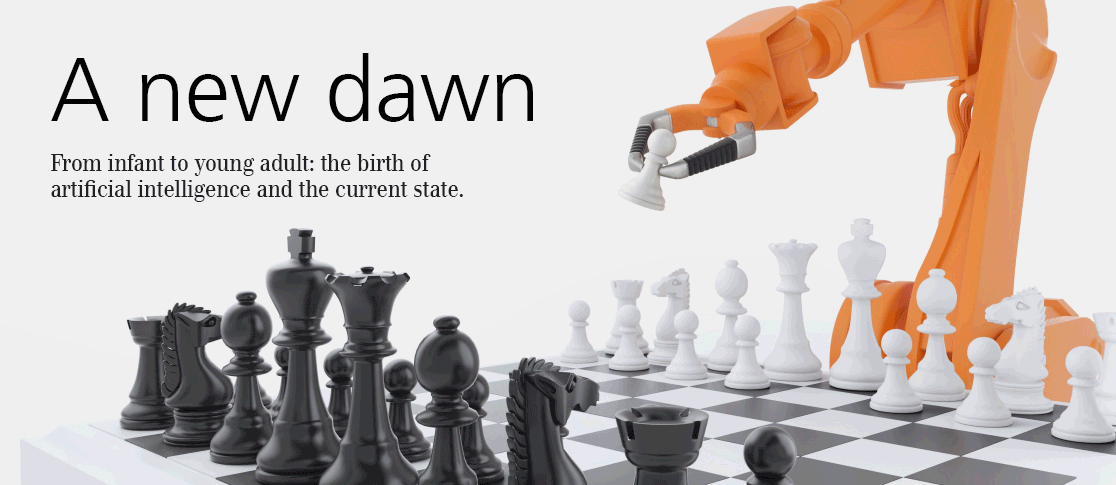


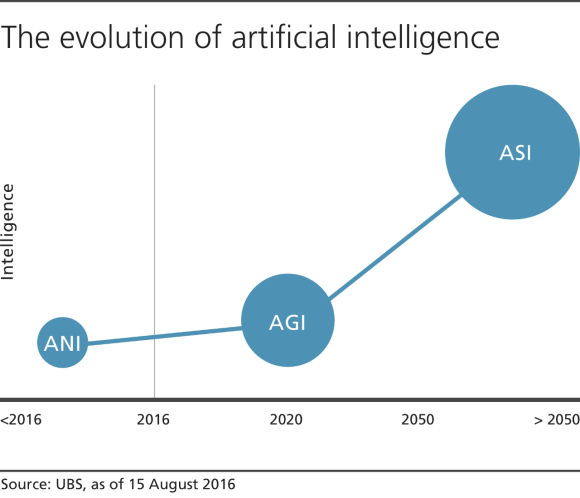
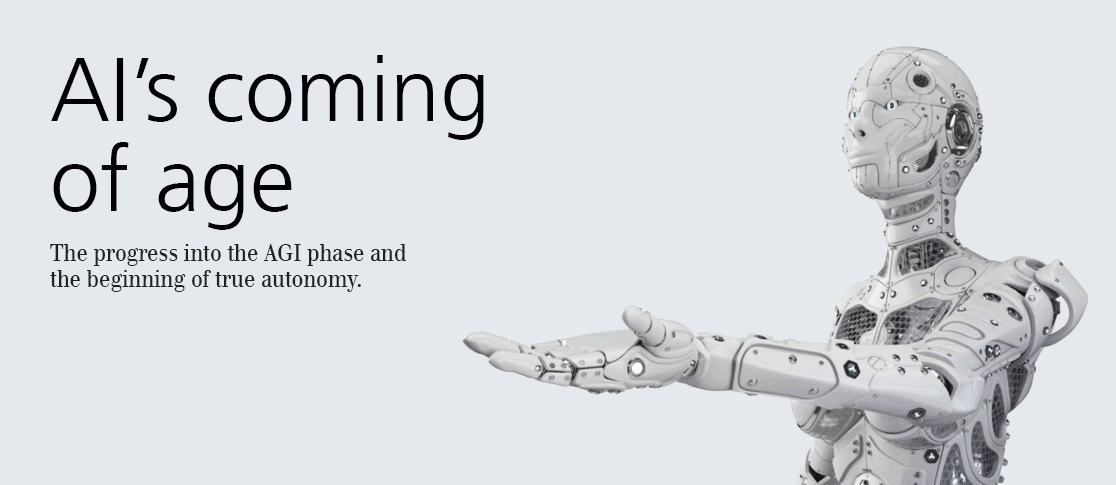

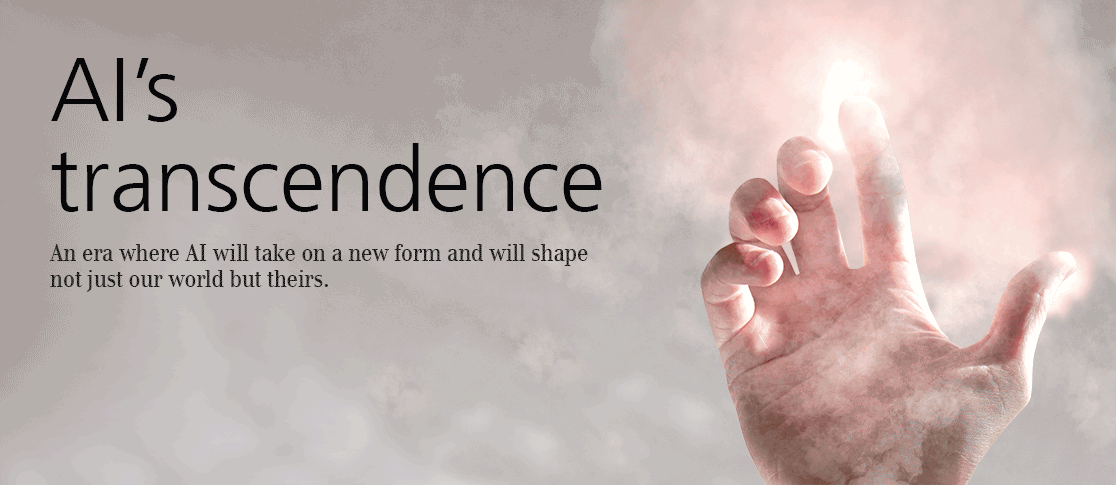
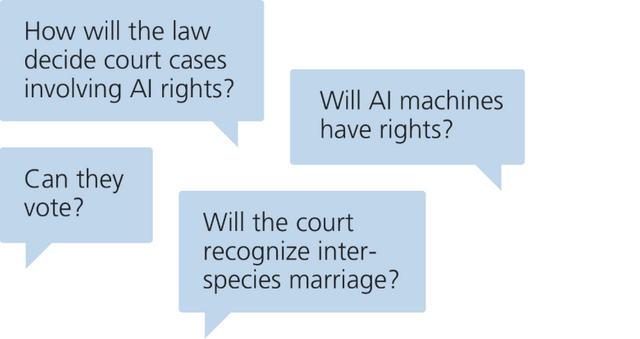

great just like science fiction. and what will be the next step. oh, obviously journey to stars. The future of this earth is very interesting, things that were dream and was figment of imagination is today's reality.